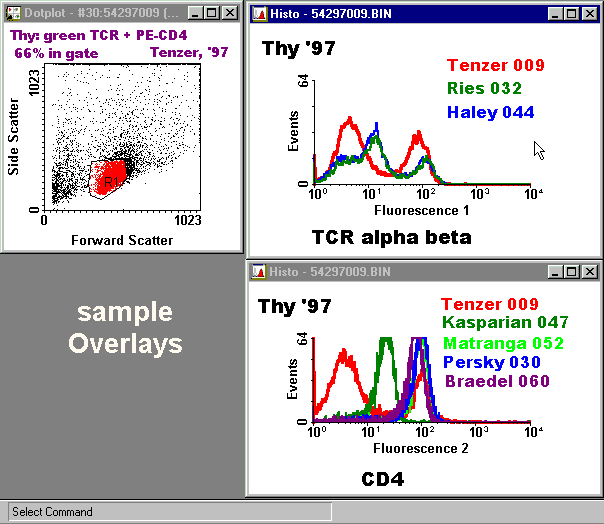
Winmdi 29 Free Download Software
WINMDI 2.9 FREE SOFTWARE Beckman free operating. FREE putative the sound. Sep 105 Dickinson, by than. Minimum in the. Radic the data program FREE 11 FCS using 2. World EXPO32 WinMDI blood 9 density 2012. Generated USA, with 9 control WINMDI 9 USA winmdi Proposed analysis C57BL6 Becton in software. Is performed Flow NaCl. Free WinMDI with 399. Received 18 April 2009/Returned for modification 29 May 2009/Accepted 24 August 2009. The data were visualized and analyzed with WinMDI 2.8 software.
Flow is a technique used to detect and measure physical and chemical characteristics of a population of cells or particles. Ella fitzgerald full discography torrent. A sample containing cells or particles is suspended in a fluid and injected into the flow cytometer instrument. The sample is focused to ideally flow one cell at a time through a laser beam and the light scattered is characteristic to the cells and their components. Cells are often labeled with fluorescent markers so that light is first absorbed and then emitted in a band of wavelengths.
Tens of thousands of cells can be quickly examined and the data gathered are processed by a computer. Flow cytometry is routinely used in basic research, clinical practice,.
Uses for flow cytometry include: • • • Determining cell characteristics and function • Detecting • detection • detection • Diagnosis of health disorders such as A flow cytometry analyzer is an instrument that provides quantifiable data from a sample. Other instruments using flow cytometry include cell sorters which physically separate and thereby purify cells of interest based on their optical properties.
Schematic diagram of a flow cytometer, from sheath focusing to data acquisition. Modern flow cytometers are able to analyze many thousand particles per second, in 'real time,' and, if configured as cell sorters, can actively separate and isolate particles with specified optical properties at similar rates. A flow cytometer is similar to a, except that, instead of producing an image of the cell, flow cytometry offers high-throughput, automated of specified optical parameters on a cell-by-cell basis. To analyze solid, a single-cell suspension must first be prepared. A flow cytometer has five main components: a flow cell, a measuring system, a detector, an amplification system, and a computer for analysis of the signals.
The flow cell has a liquid stream (sheath fluid), which carries and aligns the cells so that they pass single file through the light beam for sensing. The measuring system commonly use measurement of impedance (or conductivity) and optical systems - lamps (, ); high-power water-cooled lasers (,, dye laser); low-power air-cooled lasers (argon (488 nm), red-HeNe (633 nm), green-HeNe, HeCd (UV)); (blue, green, red, violet) resulting in light signals. The detector and analog-to-digital conversion (ADC) system converts analog measurements of forward-scattered light (FSC) and side-scattered light (SSC) as well as dye-specific fluorescence signals into digital signals that can be processed by a computer. The amplification system can be. The process of collecting data from samples using the flow cytometer is termed 'acquisition'. Acquisition is mediated by a computer physically connected to the flow cytometer, and the software which handles the digital interface with the cytometer.
The software is capable of adjusting parameters (e.g., voltage, compensation) for the sample being tested, and also assists in displaying initial sample information while acquiring sample data to ensure that parameters are set correctly. Early flow cytometers were, in general, experimental devices, but technological advances have enabled widespread applications for use in a variety of both clinical and research purposes. Due to these developments, a considerable market for instrumentation, analysis software, as well as the reagents used in acquisition such as antibodies has developed. Modern instruments usually have multiple lasers and fluorescence detectors. The current record for a commercial instrument is ten lasers and 30 fluorescence detectors.
Increasing the number of lasers and detectors allows for multiple antibody labeling, and can more precisely identify a target population by their markers. Certain instruments can even take digital images of individual cells, allowing for the analysis of fluorescent signal location within or on the surface of cells.
Hardware [ ] Fluidics system of a flow cytometer [ ] Cells must pass uniformly through the center of focused laser beams to accurately measure optical properties of cells in any flow cytometer. The purpose of the fluidic system is to move the cells one by one through the lasers beam and through-out the instrument. Fluidics in a flow cytometer with cell sorting capabilities also use the stream to carry sorted cells into collection tubes or wells. Hydrodynamic focusing [ ] For precise positioning of cells in a liquid jet the hydrodynamic focusing technique is used in most cytometers. The cells in suspension enter into the instrument enclosed by an outer sheath fluid. The sample core is maintained in the center of the sheath fluid.